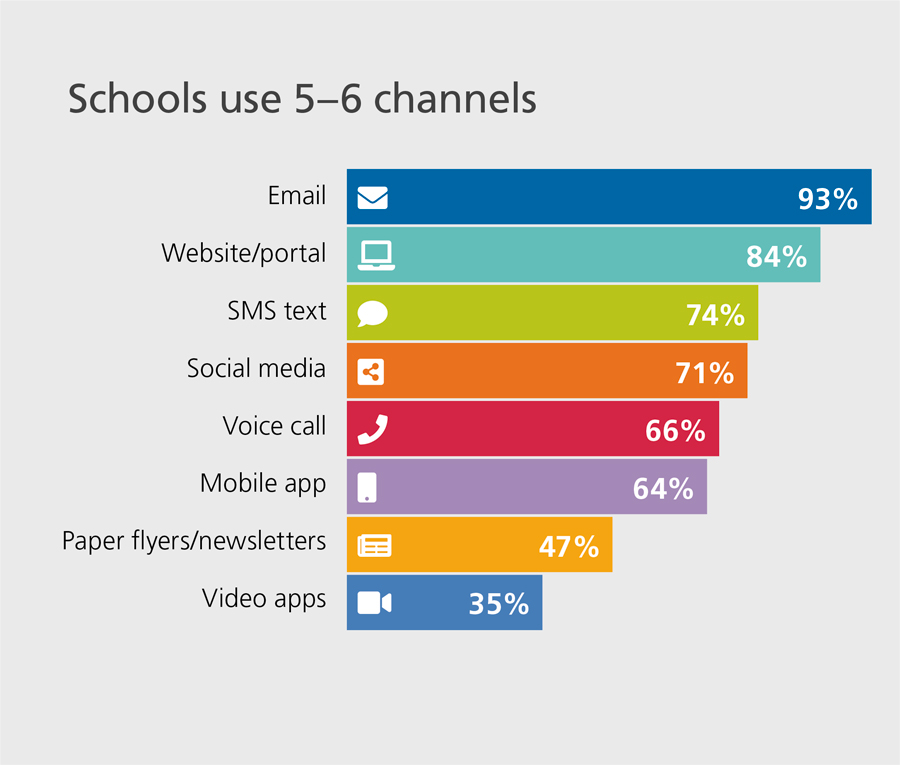
Predicting the future of school communications
ith the chaotic events of the past two years, it might seem impossible to try to predict what might happen in schools the next two years. However, that’s just what districts across the country are trying to do.
There were three key takeaways in the 1,316 responses that can provide insight into trends that are likely to affect most districts in the near future.

Unsurprisingly, all of the survey participants reported using multiple channels to communicate with students and families. In fact, about two-thirds use more than five channels of communication. Respondents understood that reaching a variety of audiences requires more than one channel. Schools provide information in a number of ways to ensure that they are reaching students, families, staff and community members where they are already receiving information.
Takeaway 2 — Email reigns, but text is gaining
Although email came out on top for communication with 41 percent of respondents reporting it as the most frequent tool they use, the story is more intriguing when it comes to how respondents rated tool effectiveness. Email was also rated the most effective by 29 percent but was followed closely by text at 23 percent. Although not being used nearly as frequently as email today, text is perceived as highly effective and an area for growth.
Takeaway 3 — Growth in all digital
Looking ahead two to three years, respondents project that the three channels they are likely to use more often are mobile applications, text and social media. These digital tools tend to be preferred by content creators because they have lower long-term distribution costs, errors can be corrected nearly instantaneously, and the same content can be easily shared across platforms. Somewhat related to the increased interest in digital is the preference to stop using traditional communication methods like paper. By a huge margin, districts in the survey reported that they would like to eliminate their use of paper flyers and newsletters over the next two to three years.
Communicating with your stakeholders

Once the communication preferences of all groups are understood, districts can make better-informed decisions about where to invest. Each time a new tool is adopted, it takes additional time to maintain the content and for training staff at a variety of levels to learn how to use the technology and how to modify the content to fit a specific format. For example, a long article on a website might need to be modified to a couple sentences with a photo for Twitter.

It is also important to identify gaps in communication access. While digital tools can be incredibly convenient for both sender and receiver, not everyone may have the same practical access to the information. For example, online grading platforms are a wonderful way to keep families informed between report cards; but that requires internet access, a device that can display the platform effectively and training for those who have never utilized a similar online system.
Many districts have overcome these barriers with booths at campus-based events that engage families directly to provide training, devices and internet hotspots. Others have opened up school-based parent centers that offer technology stations and staff help for platform questions. There are a variety of solutions, but the most important is to place a high value on equitable access to information and devote time, curiosity and resources to ensure that the groups that don’t have the loudest voices at the board meeting can still be heard.